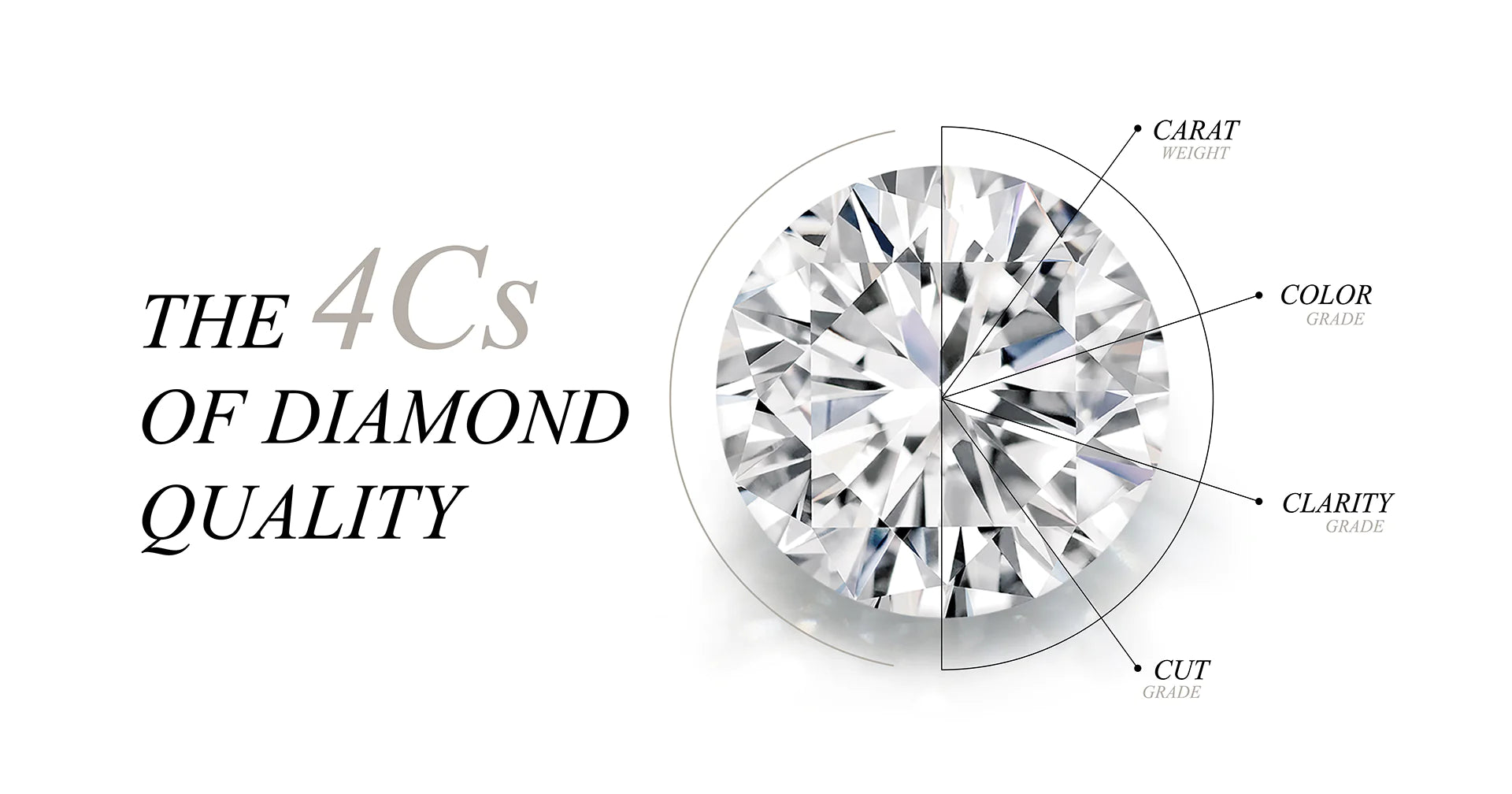The 4 Cs of diamonds are the most critical criteria professional jewelers and gemologists use to judge and convey a diamond's quality. It thus offers a standard framework for consistency in evaluation and helps consumers make very informed decisions while buying diamonds. The 4 Cs of diamonds are carat, cut, color, and clarity.
Cuts
Diamond cut refers to the proportions of the diamonds as well as how the diamond's facets are aligned and polished. It's about how well the diamond interacts with light, affecting its brilliance, sparkle, and overall visual appeal. The cut grade is a crucial factor in determining a diamond's light performance and can significantly impact its beauty and value.
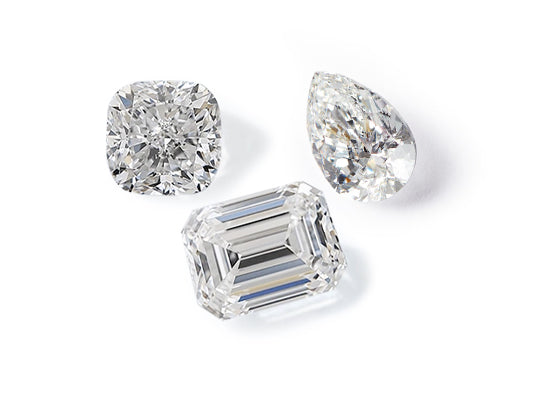
How are Diamonds Cut?
As diamonds are one of the hardest materials on earth, the process of cutting them into the diamond we see on the market today, is very complicated and takes a highly skilled professional to achieve. And, since diamonds can only be cut with diamonds, the tools used are often diamond-coated on the edges.
Before the diamond cutting process begins, lots of planning outlining is required in order to deem the best shape possible for the quality of the diamond. The diamond cutting expert will then split the rough diamond into separate pieces with diamond-coated saws or lasers while trying not to damage the stone in any way. These pieces are then turned into the desired shape by essentially placing them on a spinning axle and grinding them together. This meticulous process can take hours. Once the diamond has been cut, it then needs to be polished to ensure a perfectly smooth and reflective gem.
After the diamond has been polished and its brilliance and fire have been identified, it’s then sent to gem experts who will grade it based on the 4Cs.
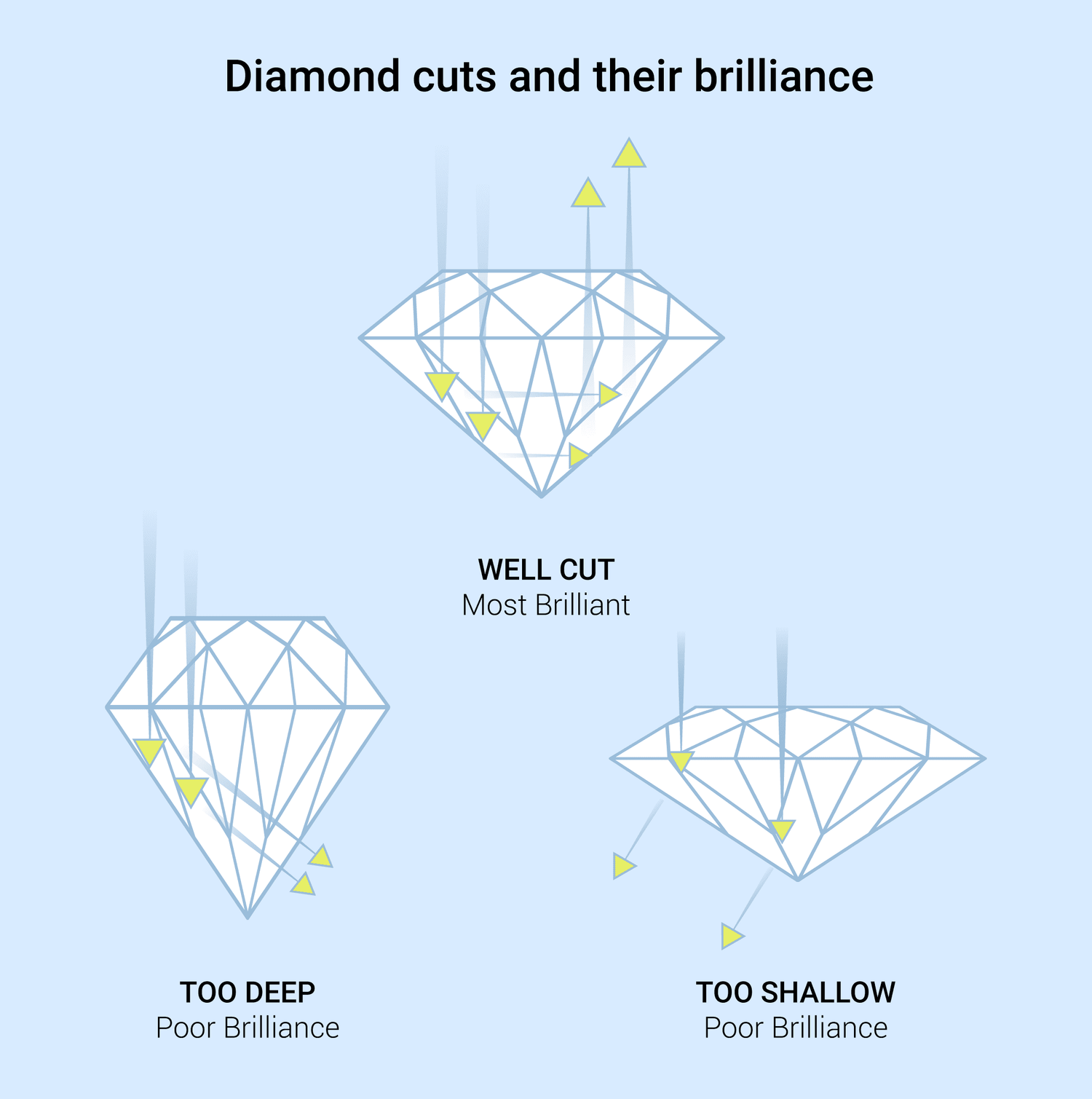
Which Diamond Cut is the Best?
While all diamond cuts are marvellous in their own way, by far the most popular and most sought-after diamond cut is either the excellent or very good cut. Both of these cuts will achieve superb sparkle for round shaped diamonds. While other grades, such as carat, colour and clarity, can be compromised since colour and clarity can be better concealed, the cut is one grade you want to ensure is the absolute best. This is because a low-cut diamond grade will result in a diamond that doesn’t sparkle as brightly.
Carat
Diamonds are not measured in size, but rather in weight. One carat is equal to 0.2 g so the higher the number of carats, the larger the diamond will often be, although the cut can affect how big the gem appears.
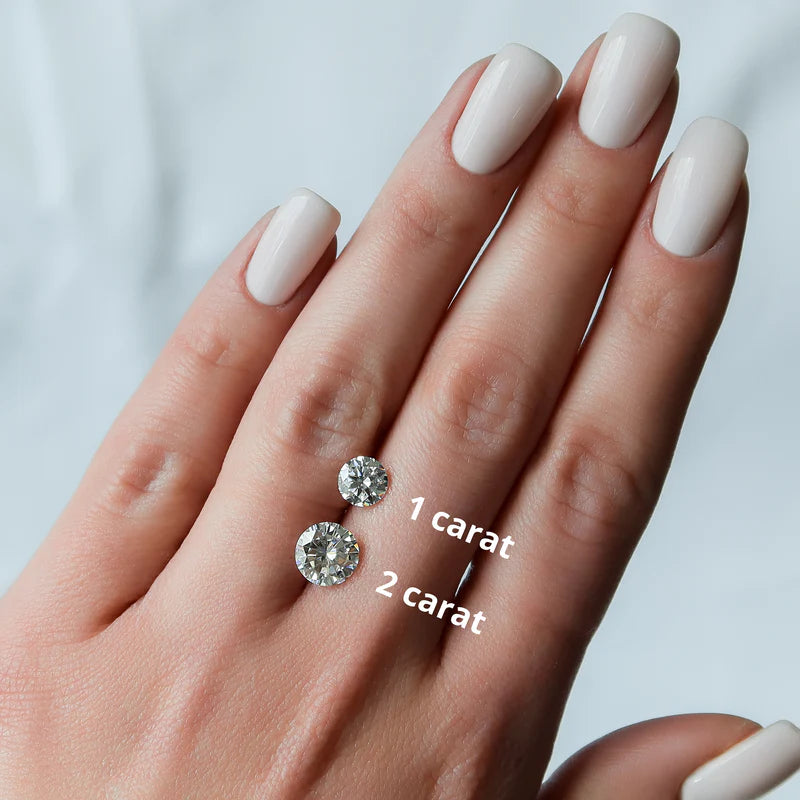
Diamond carat size
To determine a diamond or gemstone’s weight, each stone is weighed individually.
Carat weight can appear differently across different diamond shapes and while carat weight can influence the price of a diamond, no two diamonds of the same weight will be worth the same and may not even look the same size. A diamond may have a higher carat weight without appearing larger and two diamonds of the same carat weight can vary in size if one is cut deeper than the other. In other words, it is important to note that carat weight does not necessarily determine size but below you can find a rough guideline of the size you can expect.
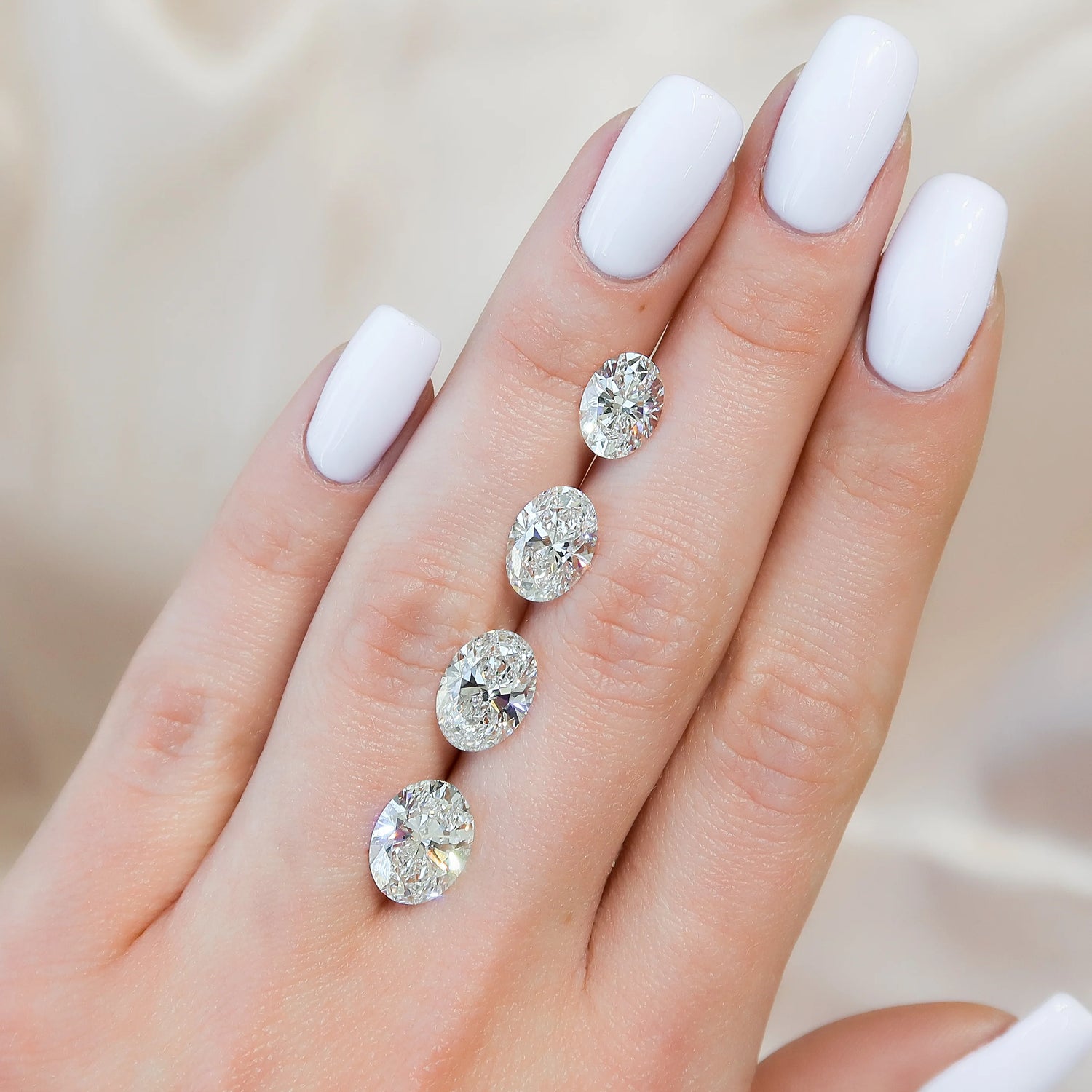
Is a higher diamond carat better?
While carats help to determine a diamond’s price, a higher carat doesn’t always equal a better quality stone.
Larger stones are rarer than smaller diamonds so the heavier the gem, the more expensive they tend to be. However, clarity is a big contributor to price and the quality of the gemstone, to many, is considered more important than the size. The cut of a diamond is also a big contributor to the quality - a poorly cut diamond may look smaller than one of a better cut but weigh the same. There’s a lot to consider than just the carat and shape of your diamond ring!
Clarity
Diamond clarity refers to the presence or absence of inclusions and blemishes in a diamond. These characteristics are often referred to as "imperfections" or "flaws." Diamond clarity is graded on a scale developed by the industry and ranges from "Flawless" (no inclusions or blemishes visible under 10x magnification) to "Included" (inclusions and blemishes visible to the naked eye).
It’s important to remember that the higher the grade, the sparklier the diamond will be.

The Diamond Clarity Chart
Diamond clarity is measured on a chart from flawless (F) or internally flawless (IF) to included (I1). The diamond clarity chart helps customers to understand and choose the best diamond possible for their budget. It’s important to remember that the higher the grade, the sparklier the diamond will be.
We offer 3 levels of Clarity coupled with corresponding colour grades.
Diamond Color
What is Diamond Colour?
Like all of the 4Cs, the colour of the diamond is an important factor to take into consideration when shopping for diamonds. In this guide, we’ll explain what the diamond colour means and which diamond colour is best for engagement rings. Colour refers to the touch of colour that you can get in white diamonds as most diamonds feature a subtle hint of yellow. The whiter your diamond is, the more light will pass through the stone to create more sparkle. The diamond industry has adopted an alphabetical colour scale from D to Z, with D as the highest grading. As you go down the scale, the diamond starts to develop a yellow or brown tint.
It’s important to remember that when buying diamond jewellery for someone, whether it’s an engagement ring, pendant, earrings or bracelet, you should buy a diamond that looks as clear as possible to you. This can also depend on things like the setting and the style.
When grading the colour of diamond, jewellery experts will use the Gemmological Institute of America (GIA) colour scale to determine the colour. This scale will show the progress of colour in the diamond as you move further down, with D being colourless and Z being light yellow to brown.
We Offer
We have chosen to group colour options from D to I in three distinctive groups matching the corresponding clarity level to offer you different options:

